May 30
27 min. to read
How to Start Graphic Design: Unleashing Your Creative Journey
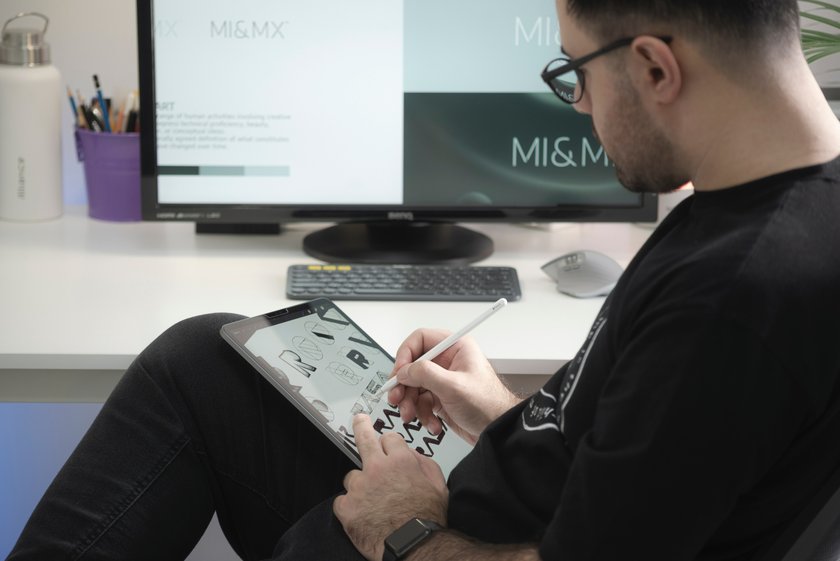 Do you want to get famous in the design industry? It's a challenging but very exciting choice. The world of graphic design offers a fascinating combination of artistic expression, visual communication, and problem-solving. If you like creating captivating logos, stunning layouts, and visually appealing illustrations, starting a career as a professional in this sphere can be an engaging and rewarding endeavor.
Do you want to get famous in the design industry? It's a challenging but very exciting choice. The world of graphic design offers a fascinating combination of artistic expression, visual communication, and problem-solving. If you like creating captivating logos, stunning layouts, and visually appealing illustrations, starting a career as a professional in this sphere can be an engaging and rewarding endeavor.
To find out how to start your own graphic design business and succeed, you need to take some important, but not easy steps. By following our tips, you can lay a solid foundation for your future success in this industry. From acquiring the necessary skills to building a strong portfolio, let's take a look at the first steps you can take to start your design career and make your creative dreams come true.
How To Become a Graphic Designer in 7 Steps
Before we get to the practical steps, it is important to understand the essence of this vibrant field. It is much more than just arranging images and text; it is the art of visual storytelling, attracting attention and communicating messages effectively through a variety of mediums. It requires a combination of technical skills, creativity, and a deep understanding of design principles.
As you embark on this path, remember to cultivate your passion for aesthetics, embrace the ever-changing digital landscape, and approach each project with attention to detail. You can reach your potential and succeed as a graphic designer through dedication, practice, and a willingness to learn. Now let's move on to some practical tips to help you achieve your goal.
Step 1. Set Clear Goals
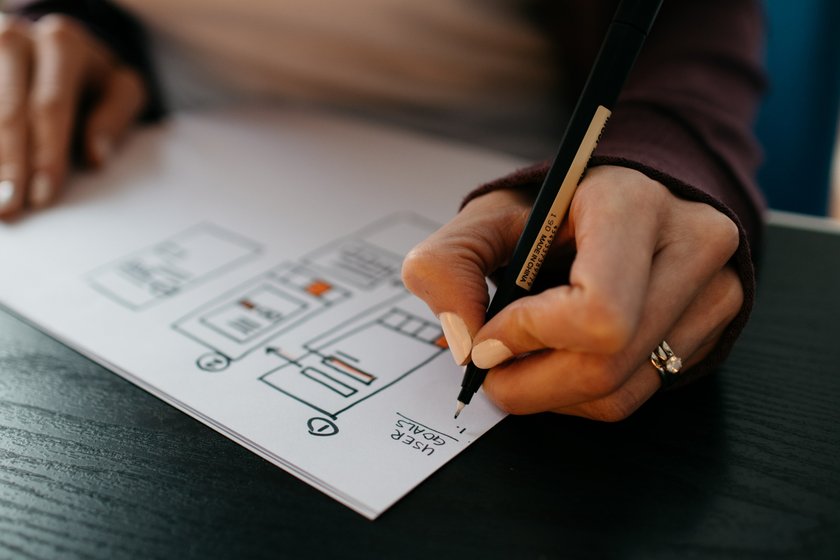 Before diving into the world of graphic design, it's crucial to establish clear goals that align with your aspirations. Reflect on what you want to achieve. Do you aim to specialize in a specific niche like branding, marketing, or packaging? Are you passionate about working in a particular industry such as fashion, technology, or advertising? Defining your goals will provide you with direction and help you tailor your learning and career path accordingly. Whether it's becoming a freelance graphic designer, working for an agency, or starting your studio, having clear objectives will guide your decisions and keep you motivated along the way. Write down your goals and regularly reassess them to stay focused on your desired outcomes.
Before diving into the world of graphic design, it's crucial to establish clear goals that align with your aspirations. Reflect on what you want to achieve. Do you aim to specialize in a specific niche like branding, marketing, or packaging? Are you passionate about working in a particular industry such as fashion, technology, or advertising? Defining your goals will provide you with direction and help you tailor your learning and career path accordingly. Whether it's becoming a freelance graphic designer, working for an agency, or starting your studio, having clear objectives will guide your decisions and keep you motivated along the way. Write down your goals and regularly reassess them to stay focused on your desired outcomes.
Step 2. Acquire Relevant Education
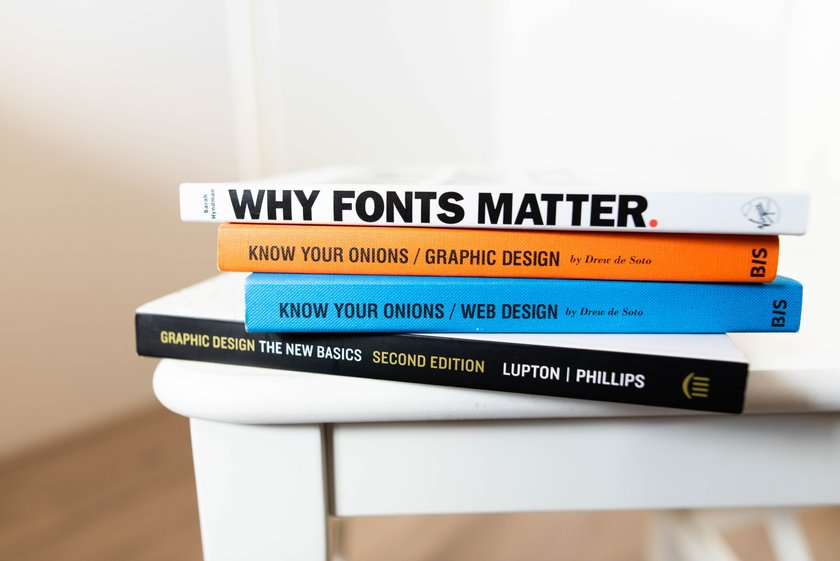 Getting a solid graphic design education will give you the skills and knowledge you need to be successful in this field. Here are the basic steps to consider:
Getting a solid graphic design education will give you the skills and knowledge you need to be successful in this field. Here are the basic steps to consider:
- Explore different universities, colleges, or online platforms that offer graphic design programs or courses. Look for reputable institutions with comprehensive curricula that cover design principles, software proficiency, and practical projects.
- Decide whether you prefer the traditional classroom environment or the flexibility of online graphic design courses. Consider factors such as schedule, location, and preferred studying style when making this decision.
- Once you've found a suitable program, enroll and commit to your education. Be prepared to invest time and effort into coursework, assignments, and projects.
- Familiarize yourself with graphic design software such as Adobe Creative Suite, including Photoshop, Illustrator, or Affinity Designer. You can also use Luminar Neo as one of the best AI photo editing softwares with a wide range of powerful tools and amazing presets.
- If possible, connect with experienced designers who can provide mentorship and train you throughout your education. Their insights and advice can prove invaluable in honing your skills and understanding industry practices.
Remember, education is an ongoing process. Stay open to continuous learning of design tools, attend workshops, and explore online resources to stay updated with new trends and techniques.
Step 3. Build a Portfolio
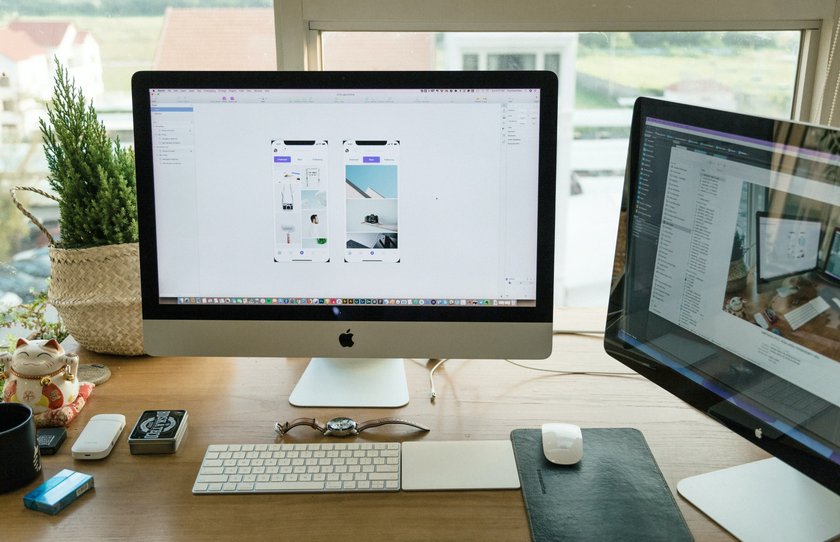 A solid portfolio is vital in the question of how to start graphic design. It is important for showcasing your skills, creativity, and capabilities to potential clients or employers. Here are some tips on how you can create it:
A solid portfolio is vital in the question of how to start graphic design. It is important for showcasing your skills, creativity, and capabilities to potential clients or employers. Here are some tips on how you can create it:
- Choose the most diverse, polished, and impressive designs for your portfolio. Aim for quality rather than quantity, and focus on works demonstrating your versatility and mastery of various design elements.
- Organize your portfolio in a logical and visually appealing way. Consider grouping similar projects or keeping them by type of industry or design. Make sure the presentation as a whole runs smoothly and engages the viewer.
- Provide insights into your design process by including sketches, drafts, or mock-ups alongside the final results. This demonstrates your problem-solving abilities and showcases your skills beyond the finished product.
- Customize your portfolio to suit the specific needs and interests of your target audience. If you're applying for a job, focus on design projects that align with the company's industry or style. For freelance work, include pieces that highlight your versatility and ability to meet diverse client needs.
- In order to find out how to start a graphic design business online, create a professional website or account on online platforms that are specifically dedicated to showcasing portfolios. Ensure that your work is visually appealing, easy to navigate, and accessible across different devices.
- Constantly update your portfolio with new and improved work as you go along in your graphic design career. Replace outdated projects with fresh and innovative ones that reflect your growth and skills.
The portfolio is a reflection of your capabilities, so take the time and effort to present your work in the best possible light. Regularly seek feedback from mentors or peers to improve and enhance your skills as you develop as a graphic designer.
Step 4. Gain Practical Experience
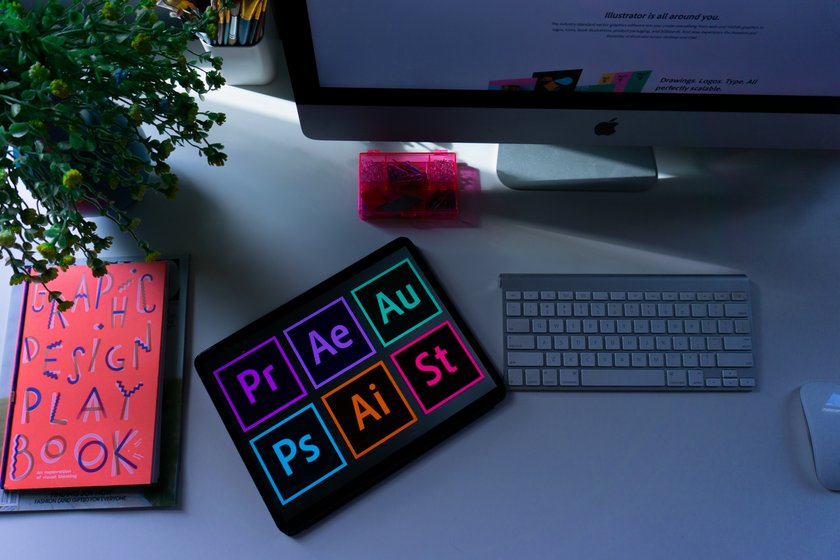 Speaking about how to become a professional graphic designer, we want to notice that practice is invaluable in shaping your skills and boosting your credibility. Consider the following steps to gain hands-on experience in the field:
Speaking about how to become a professional graphic designer, we want to notice that practice is invaluable in shaping your skills and boosting your credibility. Consider the following steps to gain hands-on experience in the field:
- Look for internship opportunities at design agencies, studios, or companies. They allow you to experience the real world, get mentorship, and work on real projects. They can also lead to valuable industry connections and potential job offers.
- Start working on freelance projects to gain experience and build your portfolio. This will give you the chance to work with different clients, solve various design problems, and develop professional communication.
- Offer your services to nonprofit organizations, local community groups, or student clubs. This will not only allow you to contribute to meaningful causes but also an opportunity to collaborate and improve your skills.
- Initiate your projects to explore new techniques, experiment with styles, and showcase your creativity. This will demonstrate your self-motivation and passion for design, while also allowing you to address specific areas of interest or specialization.
- Attend design events, conferences, and workshops, or join professional organizations in your area. Network with industry professionals and potential clients. Building connections and relationships can open doors to new opportunities and collaborations.
What do you need to start a graphic design business? That is practical experience, as it goes beyond technical skills. Take on challenges, seek feedback, and learn continually. The practical skills and understanding of the industry gained through hands-on work will greatly contribute to your growth in design work.
Step 5. Stay Updated
 The graphic design industry is constantly evolving, with new trends, technologies, and practices emerging regularly. To stay relevant and competitive, it's crucial to stay updated.
The graphic design industry is constantly evolving, with new trends, technologies, and practices emerging regularly. To stay relevant and competitive, it's crucial to stay updated.
To do this, it is necessary not only to know the design history, but also to learn new techniques, keep in touch with industry experts, and learn about new tools. It is especially important to study professional software and its possibilities. For example, if you are going to study design in photography, be sure to learn about the best image-processing apps. One of the top options is Luminar Neo. It is known for its AI tools that help you process any picture with ease. You also don't have to worry about the quality of your work. Use the printer to make sure that the paper version of your image will look the same as on your PC monitor. In addition to the powerful instruments, we should also note that this photo editor is ideal for beginners thanks to its user-friendly interface.
If you wonder how to start being a graphic designer, we also advise you to join the community of this sphere on social networks. This will help you not only stay up-to-date with the latest news but also gain experience and inspiration.
Step 6. Choose Your Sphere of Interest
 Want to know how to start a successful graphic design business? You have to specialize in a particular area of interest. Here are a few steps to help you make up your mind:
Want to know how to start a successful graphic design business? You have to specialize in a particular area of interest. Here are a few steps to help you make up your mind:
- Think about your passions, interests, and strengths. Consider the design projects or industries that inspire you the most. Identify the areas in which you are most excited and motivated to create.
- Explore different specializations such as branding, web design, illustration, packaging, user experience (UX) design, or motion graphics. Learn about the skills, tools, and demands of each area to help you make an informed decision.
- Dive into different design projects and experiment with various styles and techniques. This will give you hands-on experience and help you discover what resonates with you creatively.
- Assess the market demand for your chosen specialty. Research industries and sectors where your chosen niche is popular and offers growth opportunities.
Choosing a field of interest doesn't mean you can't explore other areas. Specialization will allow you to develop expertise, but you can always expand your skill set and learn different spheres of design throughout your career. This will help you define your professional identity and position yourself as an expert in a particular field.
Step 7: Learn How To Market Your Services
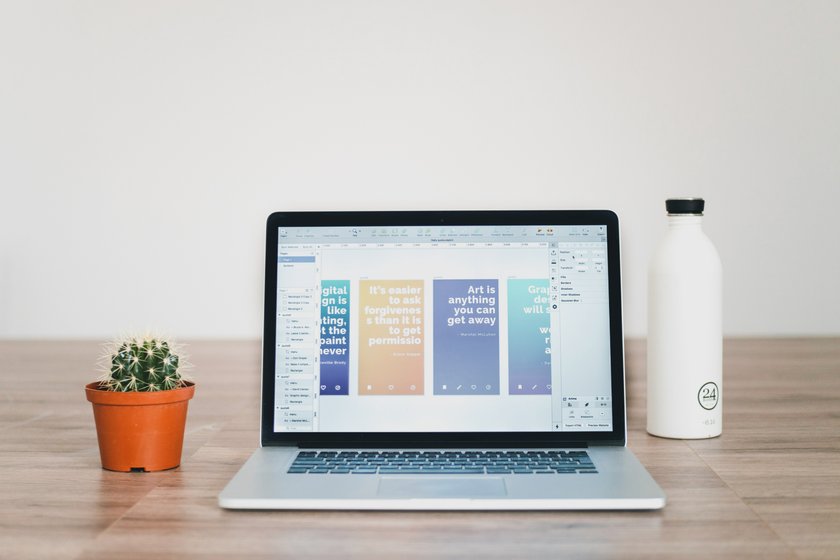 Once you have developed your graphic design skills and established your niche, it's essential to learn how to effectively market your services. Here are some key steps to help you promote yourself:
Once you have developed your graphic design skills and established your niche, it's essential to learn how to effectively market your services. Here are some key steps to help you promote yourself:
- Create an online presence. Build a professional website or online portfolio to showcase your work and provide information about your services. Ensure that your website is visually appealing, easy to navigate, and showcases your best projects.
- Define your unique brand identity. Create a memorable logo design, choose a distinctive color palette, and establish a consistent visual style that represents your aesthetic. This helps you stand out and leaves a lasting impression on potential clients.
- Networking is crucial in the sphere of design. Attend popular events, join professional organizations, and engage with potential clients. Build relationships, exchange ideas, and stay connected with the design community.
- Use social media platforms such as Instagram, LinkedIn, or Behance to showcase your work. Regularly post your designs, share your opinions and advice, and connect with other professionals in the field.
- Define your target audience and develop a marketing strategy tailored to their needs. Identify the channels, platforms, and tactics that are most effective in reaching your desired clients. This may include content and email marketing, or collaborations with complementary businesses.
- Share your knowledge and expertise by creating valuable content such as blog posts, tutorials, or videos. This positions you as an authority in your field and helps build trust with your audience.
- Maintain professionalism in all interactions with customers. Be prompt, responsive and deliver high-quality work that exceeds expectations. A positive customer experience will lead to word-of-mouth recommendations and repeat business.
Keep in mind that effective marketing is a constant work in progress. Always improve your strategy, keep track of results, and adapt as needed. With a strong marketing approach, you can increase your visibility, attract the customers you need, and build a successful graphic design business.
What Are the Different Types of Graphic Designers?
To understand how to be a graphic designer, you have to know that this industry includes a wide range of specialties, each with its own unique focus and skill set. Let’s look at the most popular.
Graphic Designers Working In-House
 In-house graphic designers are professionals who work directly within a company or organization. They are an integral part of the creative team, working closely with other departments. In-house experts have a deep understanding of a company's corporate identity, values, and target audience. They work on a wide range of projects including marketing materials, advertising campaigns, website design, packaging, and internal communications. They help create a consistent and cohesive visual identity for the organization, adapting to its changing needs.
In-house graphic designers are professionals who work directly within a company or organization. They are an integral part of the creative team, working closely with other departments. In-house experts have a deep understanding of a company's corporate identity, values, and target audience. They work on a wide range of projects including marketing materials, advertising campaigns, website design, packaging, and internal communications. They help create a consistent and cohesive visual identity for the organization, adapting to its changing needs.
Graphic Designers in Agency Environments
 These professionals work for licensed design agencies or firms that provide creative services to clients. They are part of a team that handles various projects for a diverse range of clients across different industries. Such specialists are used to working under tight deadlines. They collaborate closely with clients and account managers to understand project requirements, develop design concepts, and create visually compelling results. Agency designers often work on branding, advertising campaigns, social media graphics, and more. They have the opportunity to work with different clients, which allows them to gain exposure to various industries.
These professionals work for licensed design agencies or firms that provide creative services to clients. They are part of a team that handles various projects for a diverse range of clients across different industries. Such specialists are used to working under tight deadlines. They collaborate closely with clients and account managers to understand project requirements, develop design concepts, and create visually compelling results. Agency designers often work on branding, advertising campaigns, social media graphics, and more. They have the opportunity to work with different clients, which allows them to gain exposure to various industries.
Independent Graphic Designers
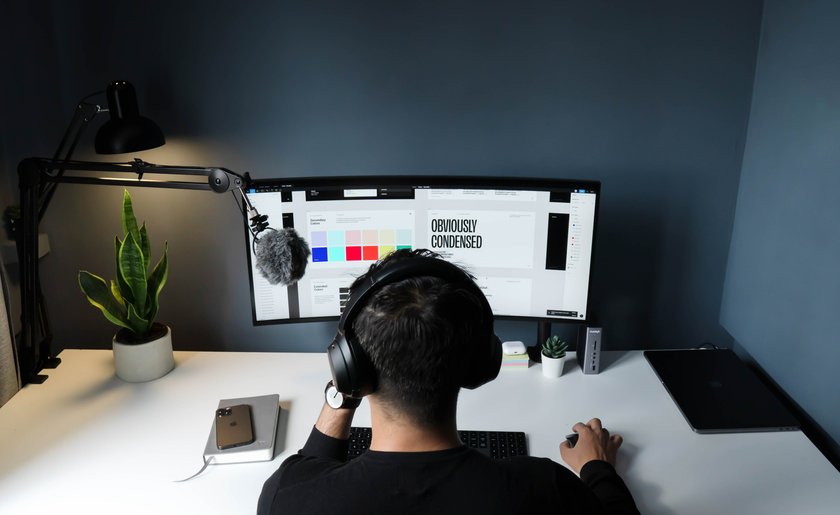 They are also known as freelance designers. These professionals work independently and directly with clients on a project-by-project basis. They often work at home and have the flexibility to choose their schedule, offering a high level of autonomy and creative freedom. Independent designers often specialize in specific areas, such as logo, web design, or illustration, and leverage their expertise to attract clients. They handle all aspects of their business, including client communication, project management, and invoicing.
They are also known as freelance designers. These professionals work independently and directly with clients on a project-by-project basis. They often work at home and have the flexibility to choose their schedule, offering a high level of autonomy and creative freedom. Independent designers often specialize in specific areas, such as logo, web design, or illustration, and leverage their expertise to attract clients. They handle all aspects of their business, including client communication, project management, and invoicing.
How to become a graphic designer online? Independent specialists are responsible for acquiring clients, building their portfolios, and maintaining their professional reputations. They work remotely or from their own studio and may collaborate with other freelancers or agencies for larger projects.
Essential Tools and Software for Graphic Design
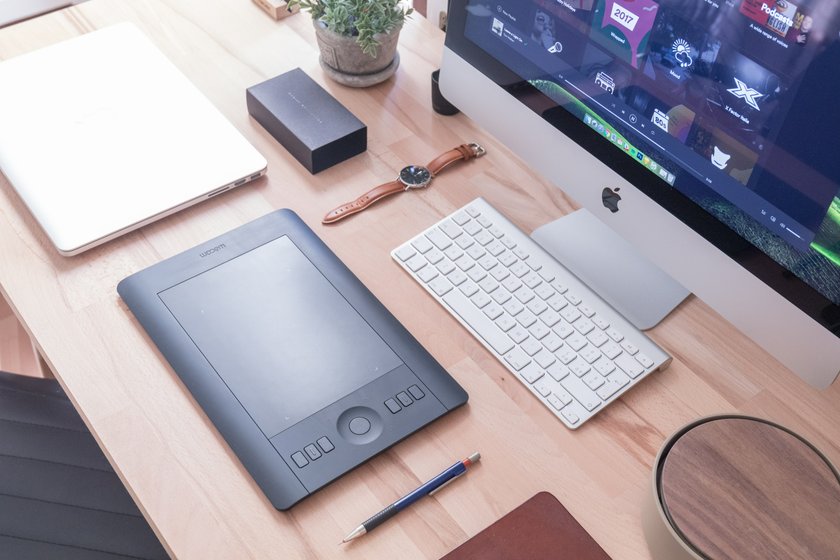 Professionals rely on a variety of tools and software to bring their creative visions to life. Here's a list of what you might need:
Professionals rely on a variety of tools and software to bring their creative visions to life. Here's a list of what you might need:
- A reliable computer, whether it's a desktop or a laptop, is essential for your work. It should have sufficient processing power, memory, and storage to handle graphic-intensive tasks.
- Adobe Creative Cloud is widely considered the industry standard. It includes popular applications such as Photoshop for image editing and manipulation, Illustrator for vector graphics, and InDesign for layout and print design. You can also find other interesting apps for your work, for example, the best Canva alternatives.
- Traditional sketching tools like pencils, pens, and sketchbooks are also important for brainstorming ideas, sketching concepts, and creating rough drafts before moving to digital software.
- Graphic designers often use drawing tablets to create illustrations and digital paintings. They provide a natural drawing experience and better control over digital artwork.
- Image editing apps. Besides Photoshop, other software like Affinity Photo or GIMP offers powerful capabilities for editing and retouching images, adjusting colors, applying filters, and creating stunning visual effects. You can also use online photo editors.
One of the best image-processing applications is Luminar Neo. It provides intuitive and efficient workflows for both beginners and professionals. With its AI-based tools, it is perfect for HDR photo editing. The app enables designers to automate certain tasks, apply complex adjustments easily, and experiment with creative styles. Luminar Neo is expected to offer a comprehensive set of features to enhance images, including advanced retouching, sky replacement, color grading, and more. It presents an exciting option for graphic designers seeking innovative tools to elevate their projects.
Starting a Career in Graphic Design Without Prior Experience
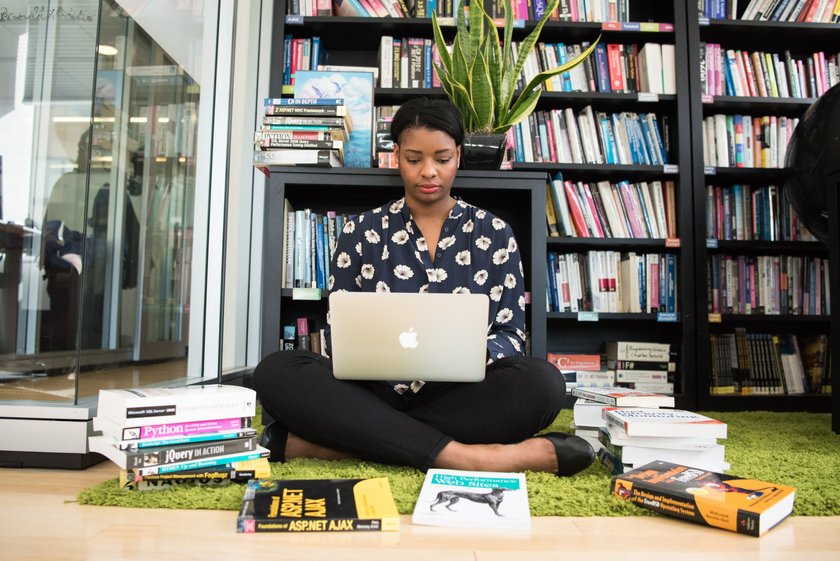 How to start a graphic design business with no money and no experience? It's not easy, but possible by taking proactive steps.
How to start a graphic design business with no money and no experience? It's not easy, but possible by taking proactive steps.
Begin by learning the fundamentals of this sphere, familiarize yourself with the essential software, and start building your portfolio through personal projects or small freelance assignments. Seek feedback from experienced designers and consider taking courses or workshops to deepen your knowledge.
Look for internship or volunteer opportunities. Stay updated on the latest trends and techniques, and actively engage in networking to expand your connections. With dedication, continuous learning, and a strong portfolio, you can start a successful career.
The Benefits of Becoming a Graphic Designer
 Becoming a graphic designer offers numerous benefits that make it an appealing career choice for many creative individuals. Some key advantages include the following:
Becoming a graphic designer offers numerous benefits that make it an appealing career choice for many creative individuals. Some key advantages include the following:
- It allows you to express your creative and artistic abilities in a professional environment. You have the opportunity to conceptualize and visually communicate ideas, solve design problems, and bring your visions to life through a variety of mediums.
- The demand for skilled graphic designers continues to grow in our visually-driven world. From marketing agencies and studios to in-house creative teams and freelance opportunities, there are abundant career prospects for talented people.
- You have ample opportunities for professional growth and advancement. With experience, you can take on more complex projects, lead design teams, or even understand how to start a graphic design company. Continuous improvement and expanding your portfolio can lead to higher-paying and more challenging projects.
- This sphere offers flexibility in terms of work arrangements. This allows for a better work-life balance and the freedom to take on diverse projects or explore personal creative pursuits.
Becoming a graphic designer provides a fulfilling and rewarding career path with ample opportunities for creativity, professional growth, and job prospects. The ability to make a visual impact makes this industry an appealing choice for those with a passion for aesthetics and creativity.
Conclusion
The graphic design profession offers a number of advantages, including the opportunity to unleash your creativity. With experience, you gain a versatile skill set applicable to a variety of industries, impressive communication skills, and flexibility in your workflow. If you have a passion for design and a desire to communicate ideas visually, starting a career in this field can be an exciting and rewarding journey for you.
FAQ
Where To Start Learning Graphic Design?
There are various options to start learning. You can begin by exploring online resources such as tutorials, courses, and design blogs. Additionally, books and design-related communities provide valuable insights. Familiarizing yourself with professional software and practicing hands-on projects will also help develop your skills.
What Services Will My Design Business Provide?
It will depend on your skills, expertise, and target market. Common services include logo design, branding, and identity development, website and print design, social media graphics, packaging, and illustration. It's essential to define your niche and offer services that align with your strengths and the needs of your target clients.
How Does a Graphic Design Business Make Money?
Building a strong client base, doing high-quality work, and excellent customer service are essential to the financial success of a business owner. Professionals usually charge clients based on factors such as the complexity of the project, the scope, and the skill level of the designer. Payment can be structured as an hourly rate, a flat fee per project, or a pre-payment agreement.
Where Can I Find Graphic Design Clients?
Finding clients can be done through several avenues, including online freelance platforms, social media, networking events, and recommendations from your previous customers.


 >
>

